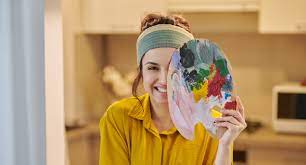I. Introduction
Art, in its various forms, possesses a transformative power that extends beyond aesthetics. This article explores the profound impact of art and creativity on the healing process, delving into how artistic expression can serve as a therapeutic tool for emotional, mental, and even physical well-being.
II. Art as a Therapeutic Outlet
A. Emotional Release
Art provides a unique channel for emotional expression. Whether through painting, drawing, or other creative mediums, individuals can externalize and process complex emotions, fostering a sense of relief and catharsis.
B. Coping with Trauma
Art therapy has shown efficacy in helping individuals cope with trauma. Engaging in creative expression allows for a non-verbal exploration of emotions, enabling survivors to navigate their experiences at their own pace.
III. Creativity and Mental Well-being
A. Stress Reduction
Engaging in creative activities has been linked to stress reduction. The immersive nature of art allows individuals to shift their focus, promoting relaxation and mitigating the impact of daily stressors.
B. Boosting Mood
Creativity triggers the release of dopamine, a neurotransmitter associated with pleasure and reward. This natural mood boost can alleviate symptoms of anxiety and depression, contributing to improved mental well-being.
IV. Art and Physical Healing
A. Distraction from Pain
In medical settings, art has been employed as a distraction from physical pain. Patients undergoing treatments or facing chronic illnesses often find solace and relief through creative engagement.
B. Enhancing Neurological Function
Creative activities stimulate brain function, fostering neural connections and promoting cognitive health. This is particularly relevant in the context of neurorehabilitation for individuals recovering from strokes or brain injuries.
V. Artistic Expression and Self-Discovery
A. Fostering Self-Awareness
Engaging in art allows individuals to explore their inner selves. Through creative expression, people may discover hidden talents, gain insights into their emotions, and develop a deeper understanding of their identity.
B. Empowerment through Creation
The act of creating art fosters a sense of agency and empowerment. Individuals can shape their narratives, express their perspectives, and reclaim a sense of control over their lives through artistic endeavors.
VI. Art Therapy in Various Forms
A. Visual Arts
Painting, drawing, and sculpting are common visual art forms used in therapy. These activities provide a tangible and often symbolic means of expressing emotions and experiences.
B. Performing Arts
Music, dance, and theater also play a significant role in therapeutic settings. Movement and rhythm can be powerful tools for emotional expression and communication.
VII. Community and Connection
A. Art as a Shared Experience
Creating art in a communal setting fosters a sense of connection and shared experience. This collective creativity can strengthen social bonds and provide a supportive environment for healing.
B. Art-Based Support Groups
Art-based support groups bring individuals facing similar challenges together. Sharing creative experiences in a group setting promotes understanding, empathy, and a sense of belonging.
VIII. Overcoming Creative Blocks
A. Nurturing a Non-Judgmental Environment
Overcoming creative blocks often involves creating a non-judgmental space. Encouraging self-expression without the fear of criticism fosters a sense of safety and freedom in the creative process.
B. Embracing Imperfections
Art therapy emphasizes the journey rather than the end result. Embracing imperfections allows individuals to focus on the process of creation rather than fixating on perceived shortcomings.
IX. Incorporating Art into Daily Life
A. Artistic Practices for Everyone
Incorporating art into daily life need not be confined to formal therapy. Simple activities like journaling, doodling, or engaging in creative hobbies can provide therapeutic benefits for individuals of all ages.
B. Mindful Creativity
Approaching creative activities with mindfulness enhances their therapeutic impact. Being fully present in the creative process allows individuals to derive maximum benefit from their artistic endeavors.
X. Conclusion
In conclusion, the power of healing through art and creativity is a testament to the profound impact of self-expression on human well-being. Whether used in formal therapy or as a personal practice, art has the capacity to transcend words and contribute to emotional, mental, and physical healing.
XI. Frequently Asked Questions (FAQs)
A. Can anyone benefit from art therapy?
Yes, art therapy is inclusive and can benefit people of all ages and backgrounds. It provides a versatile outlet for creative expression and healing.
B. How can someone with no artistic skills engage in art for therapeutic purposes?
Art therapy is about the process, not the outcome. Simple activities like coloring, journaling, or even doodling can be therapeutic, requiring no prior artistic skills.
C. Are there specific types of art therapy for different mental health conditions?
Art therapy can be adapted for various mental health conditions. Different modalities may be employed based on individual needs, preferences, and the goals of therapy.
D. Can art therapy be beneficial for children?
Yes, art therapy is particularly effective for children. It provides a non-verbal means for them to express themselves, understand their emotions, and cope with challenges.
E. Is there a recommended frequency for engaging in art therapy?
The frequency of engaging in art therapy can vary based on individual preferences and needs. Some may benefit from daily practices, while others may find weekly sessions more suitable.

